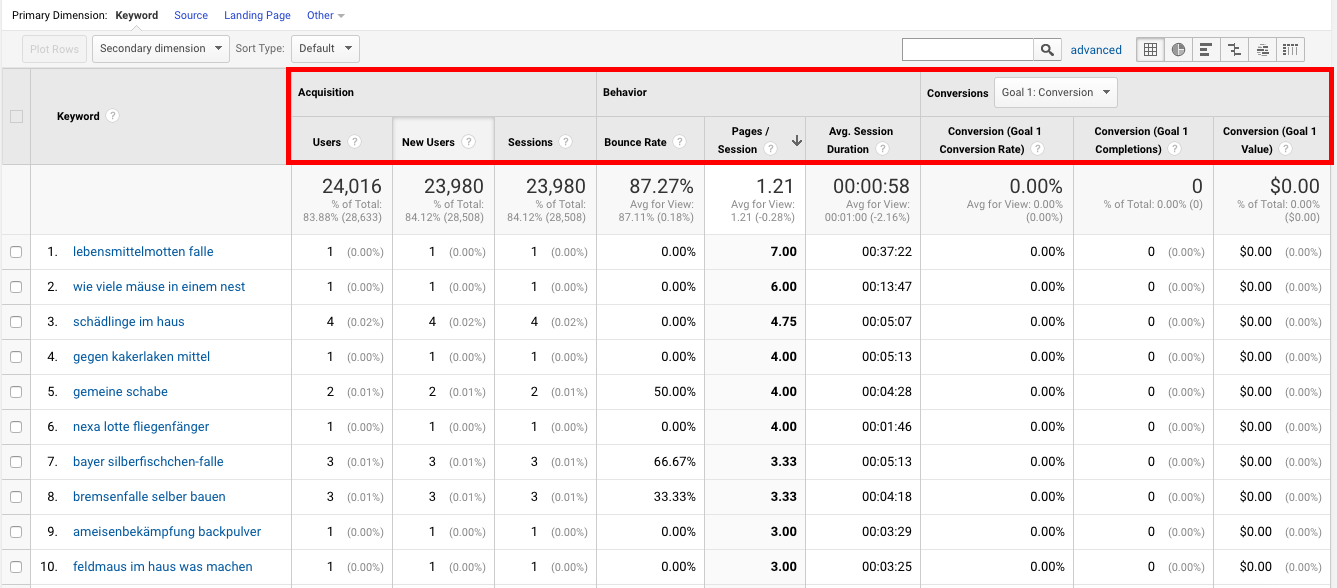Browsing the Midst of Additional Dimension in Google Analytics: A Detailed Exploration on Its Performance
In the world of digital analytics, the ins and outs of data analysis commonly hold the trick to opening valuable understandings. Within the large toolkit of Google Analytics lies a feature that acts as a covert treasure for those that look for a deeper understanding of individual habits and website performance. Secondary dimensions, though seemingly uncomplicated at very first glimpse, nurture a wealth of untapped prospective waiting to be utilized. As we start this journey to discover the nuanced capability of additional measurements, we will uncover exactly how this feature can brighten patterns, unveil correlations, and ultimately lead the way for educated decision-making in the electronic landscape.
Understanding Secondary Dimensions in Google Analytics

Recognizing exactly how secondary measurements work is essential for leveraging the complete power of Google Analytics. By incorporating main metrics with second dimensions, you can acquire beneficial understandings that drive notified decision-making and optimization strategies.
Leveraging Secondary Dimensions for Data Evaluation
Building upon the foundational understanding of just how additional measurements boost data evaluation in Google Analytics, the utilization of these added layers of information comes to be paramount in removing important insights for educated decision-making and optimization strategies. By leveraging secondary measurements, experts can dive deeper into the efficiency metrics by including more context to the key measurements, thus uncovering covert patterns and relationships that may not be apparent in the beginning glance. This much deeper degree of analysis enables services to much better understand user behavior, recognize trends, and pinpoint areas for improvement.
Additionally, secondary measurements provide a more comprehensive sight of the information, permitting for segmentation based upon numerous criteria such as demographics, devices, traffic resources, and much more. This division helps with a much more granular evaluation, making it possible for organizations to tailor their projects and methods to certain audience sectors for boosted targeting and customization. Essentially, the tactical use second dimensions equips organizations to make data-driven choices that drive growth and success in the digital landscape.
Advanced Strategies for Additional Measurement Application
Exploring elaborate methods to harness the complete possibility of secondary measurements in Google Analytics boosts the deepness and elegance of data evaluation for tactical decision-making. One sophisticated strategy for implementing additional dimensions is the use of custom measurements. Additionally, combining secondary measurements with innovative sectors can give even much more granular insights by using numerous layers of segmentation to the information.
Interpreting Insights With Additional Dimensions

When analyzing insights with second dimensions, it is vital to take into consideration the context of helpful hints the information and just how various measurements connect with each various other. For instance, understanding which details traffic sources cause higher conversion rates or identifying which gadgets users like for making purchases can provide actionable understandings for optimizing advertising projects and boosting total site performance. By very carefully taking a look at the data with secondary dimensions in mind, businesses can make informed choices that drive purposeful results and enhance their digital presence.
Enhancing Efficiency With Second Measurements

One vital way to maximize efficiency with additional measurements is by segmenting information a lot more granularly. This enables you to isolate particular variables that might be influencing your metrics and gain a far better understanding of what drives success or failing in your digital initiatives. As an example, by incorporating secondary measurements such as 'device classification' and 'landing web page,' you can identify which tool types are most effective for particular touchdown web pages, enabling you to customize your strategies accordingly.
In addition, using secondary dimensions can aid you recognize patterns, patterns, and connections that might not be evident when evaluating information with key dimensions alone. This much deeper degree of analysis can cause more informed decision-making and eventually improve the total efficiency of your website or digital advertising and marketing campaigns.
Final Thought
To conclude, second measurements in Google Analytics play a vital duty in boosting information evaluation and offering deeper insights right into web site efficiency. By utilizing innovative strategies and analyzing the data effectively, companies can maximize their methods and improve total performance. Recognizing the capability of second dimensions is necessary for making educated decisions and driving success in the digital landscape.
By leveraging second dimensions, experts can dive deeper into the performance metrics by adding even more context to the main measurements, therefore discovering hidden patterns and relationships that might not be go to the website obvious at very first look. One advanced technique for implementing secondary measurements is the use of personalized measurements.Having actually mastered sophisticated strategies like custom-made dimensions and regex for secondary measurement execution in Google Analytics, the next vital step is translating the beneficial insights obtained through these innovative information division methods. Analyzing insights via secondary measurements entails evaluating the connections between the main and second dimensions chosen, discovering patterns, trends, and connections that might not be quickly evident when looking at the information in its entirety.When analyzing insights with second measurements, it is crucial to think about the context of the data and exactly how various dimensions interact with each other.